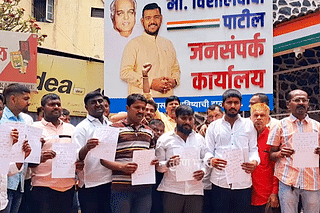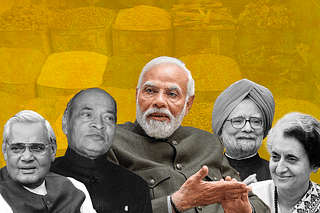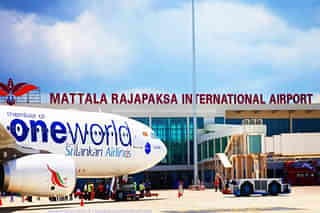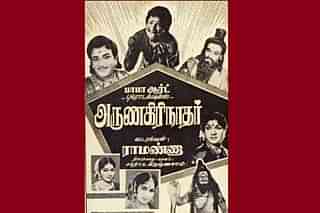Culture
A Roadmap To The Future: How To Tap India’s Phenomenal Tourism Potential For Nation-Building
Kheersana Yumlembam
Jan 25, 2017, 11:44 AM | Updated 11:43 AM IST
Save & read from anywhere!
Bookmark stories for easy access on any device or the Swarajya app.
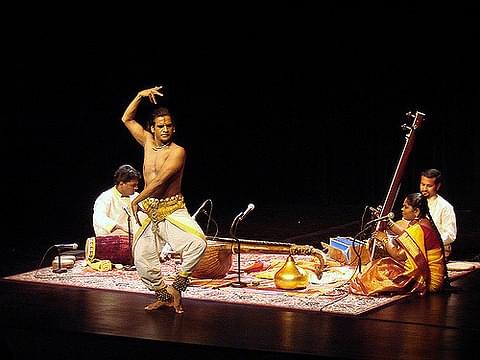
Also read: Nation-Building Using International Tourism As Rocket Fuel: A 15-Point Roadmap
Integration With The Smart Cities Programme
Each state’s museum and institutes must be established in different cities spread across the state, not concentrated in one single city as is the norm today. Similarly, the modern cultural monuments must be constructed in different cities across the state, not in one single city. Hotels and other components of the service and tourism industry will naturally grow in these cities. They must be encouraged to do so.
There must be adequate connectivity between these cities. This will ensure that tourism spreads to India’s hinterlands, providing people more opportunities for progress, and giving people incentives to move away from overcrowded metropolitan cities. This will improve the standards of living throughout.
These cities, along with the entertainment SARs and the medical hubs, should become a component of, or addendum to India’s Smart Cities programme.
Why New Institutes Are Needed
Critics will point out that several film, theatre, dance, music, and art institutes and academies already exist in various states as well at the central level. Why then, do we need to create new institutes from scratch? My counter to these critics would be: What impact has these existing institutes and academies had on tourism and the public consciousness over the many decades of their existence? What have they achieved?
Have they succeeded in bringing Indian culture into the mainstream media and in the public consciousness, even within India itself? Have they made any effort to have their programmes shown in the media? How many people abroad do these institutions connect with or influence? I have interacted with tens of thousands of international tourists in over 10 years, and have not met a single tourist who has heard of any of these academies or institutes. How many Indian children have they reached out to and influenced? How many Indian children know anything about Indian classical music, folk music, classical dance, Indian arts, or Indian culture, as a result of their efforts? All we see today is children mouthing Bollywood songs and imitating its mongrel dance moves.
The existing academies and institutes have ceded the cultural space in India to Bollywood and its ilk. I have met countless tourists who visit India seeking a glimpse, a taste, of our amazing, incredibly rich culture. They leave disappointed by Indian cinema (especially Bollywood’s) mediocrity and cultural irrelevance, Indian theatre’s creative bankruptcy (rehashed Shakespeare and Broadway plays don’t cut it!), and the absence of an active cultural scene in India, due to which Indian classical music, folk music and classical dance forms are almost totally absent from the audiovisual and digital media, and from the popular consciousness.
Tourists often lament the absence of an original music industry in India. They often tell me how they discern two distinct and strong influences on Bollywood music, both non-Indian: a Western sound, and a vaguely Middle-Eastern sound. They wonder why Indians feel the need to copy those styles of music. They can readily find superior examples of such music and culture in Europe and the Middle East. Why then should they visit India? They wonder what authentic Indian music sounds like, what Indian dance forms look like. They search in vain for India’s great culture, and all they find is a vacuum.
The existing academies and institutes have failed. They are a remnant of the bad days of socialist mediocrity. They are run by government officials and bureaucrats and are rife with politics. They achieve no worthwhile purpose and are a massive drain on the taxpayer’s money. They have no business existing in the 21st century. They need to go the way of the Planning Commission and be replaced by the modern, world-class institutes I have proposed.
Implementation: Minimum Government, Maximum Governance
The museums and institutes I propose must be run according to the highest international standards. The project will fail if they are operated in a half-hearted, lackadaisical, bureaucratic, politicised manner similar to the way India’s education and cultural institutions are being run for decades. The intent and purpose of the entire exercise is to bring India up to international standards.
The government should not be involved in running them. Politicians, government officials, bureaucrats, and their relatives, agents, and proxies must be scrupulously kept away from these institutions. They are the equivalent of Rowling’s dementors in that they give the kiss of death to any project they are involved in.
Consider the case of India’s passport issuance system, which has been transformed and revolutionised after being outsourced to a private company (TCS). The passport application process used to be extremely tedious and cumbersome when it was run by the government, with an average waiting period of three to six months. Today, it is not uncommon for people who don’t require police verification to receive their passports in two or three days, which is faster than the issuance times in the US and the UK.
Consider the manner in which India’s next generation railway stations are being developed by private developers, something that will revolutionise rail travel in the country.
These are excellent examples of what can be achieved in India. They show the way forward: Minimum Government, Maximum Governance, which is precisely what Prime Minister Narendra Modi emphasises. Private investment should be welcomed. The museums and institutes can either be run in the form of public-private partnerships, or be wholly privately owned. The government must set the desired standards, and ensure that they are adhered to.
The museums and institutes’ running, management, and operations must be outsourced to top-quality private companies, in a professional, fair, transparent, and strictly meritocratic manner, without any political or other interference of any kind whatsoever.
Highest International Standards, No Compromise In Quality
The museums and institutes must be large, spacious, ambitious, and well-designed. They must be architecturally unique monuments in their own right, with campuses of their own. They must have state-of-the-art technology and world-class staff. The best foreign experts must be hired as consultants and mentors during the initial years where applicable, in order to develop Indian expertise in the long run. This is non-negotiable; there must be no compromise in the staff’s quality.
There are several historical examples to learn from, wherein countries have reformed and transformed institutions and systems. Consider China’s 863 Program, which employed foreign experts as consultants and mentors in building the infrastructure and capabilities needed to develop homegrown advanced technologies. Take the examples of China’s Project 211 and Project 985, which together, elevated more than 100 universities to world-class status, and more than 10 universities to elite status. These are just three examples out of many. One must learn from these examples, instead of trying to reinvent the wheel.
Each institute must train around 1,000 students per year. There must be no academic barriers to entry. These are vocational schools, not academic institutions. Any person with sufficient talent and competence in the particular field should be free to join, regardless of academic background. For the first five years, the institutes should give students a scholarship that covers their tuition and living expenses, instead of charging fees. This will help to quickly create a pool of talented individuals who will be able to seed the cultural industries that will form the backbone of the nascent local tourism industry.
I must emphasise that these institutes must train students in Indian culture, not in foreign culture imported from elsewhere or disguised as Indian culture. Other countries take great pains to compete with India by promoting and showcasing their indigenous cultures. Why should we assist them? I see no reason for Indian dance institutes to teach Flamenco or ballet, for Indian theatre institutes to perform Shakespeare’s plays, for Indian music institutes to teach Western or Middle Eastern music, or for Indian films to stop representing Indian culture altogether. The institutes I propose must teach and promote indigenous Indian culture, and indigenous Indian culture only. That must be their USP.
Cultural Festivals To Boost Tourism Several-Fold
Each institute must hold a yearly, week-long festival that showcases and celebrates its output. These should be modelled after internationally recognised cultural festivals such as the New Orleans Jazz and Heritage Festival, Utah’s Sundance Film Festival, the Bordeaux Wine Festival, and California's Coachella Valley Music and Arts Festival, to name a few.
Thus, every state will have eight cultural festivals per year, giving the entire country a grand total of 232 festivals per year, each showcasing a unique aspect of Indian culture. There will be 29 culinary festivals, music festivals, film festivals, theater, dance, and art festivals, as well as 29 yoga festivals throughout the country each year. These must be scheduled evenly throughout the year.
If this sounds like overkill, consider the fact that very soon, over 1.5 billion international tourists will be up for grabs every year, all looking for memorable, unique experiences. Over $2 trillion in tourism revenues will soon be at stake every year. For some perspective, India’s 2013 GDP was only $1.877 trillion. If India manages to attract even 5 per cent of these tourists, our GDP growth rate will rise by several percentage points, which is precisely what we are looking for in the years to come.
The year-round cultural festivals will give international tourists plenty of reason to visit India throughout the year, rather than visiting only during the October-March “tourist season” as is prevalent today. This will undoubtedly boost tourist arrivals and tourism revenues several-fold.
National Integration And Nation Building
My roadmap will not only give international tourism in India a quantum leap, but will also help rebuild, revitalise, and rejuvenate the nation. They will create a large number of world-class institutions in each state that will serve the country for decades to come. They will grow tourism several fold and develop numerous new cultural industries from scratch. They will also give Indians a number of great reasons to travel within India rather than go abroad, which will boost domestic tourism.
Ordinary Indians typically spend most of their lives in or around the place of their birth. They don’t get many opportunities to travel to other parts of India. Most people from Maharashtra know next to nothing about the people of Manipur or Orissa; most people from Kerala know almost nothing about the people of Haryana or Sikkim, and vice-versa. My roadmap will create the infrastructure, the industries and the opportunities that will incentivise and enable people to travel within the country and meet people they would normally never meet. They will gain a greater understanding and appreciation of the depth, variety, and richness of our great country’s amazing culture. This is national integration in the truest sense, implemented in practice, rather than merely parroted as a slogan as it has been for decades.
My roadmap will transform India into a highly competitive and attractive tourism destination and attract massive international tourism by creating new institutes and infrastructure that empower talented young Indians to seed new restaurants, film industries, dance, music, and theater groups, operas, art galleries, yoga schools, and allied cultural industries at the state level, which will in turn create a self-reinforcing grassroots cultural and economic ecosystem that provides livelihoods for millions of Indians throughout the country via the tourism industry, and, more importantly, revives each state’s unique cultural identity and brings about a cultural renaissance in the country. In other words, this is nation-building, using tourism as the catalyst.
The Central Government’s Role
The central government has a critical role in this roadmap: that of a coordinator, facilitator, and promoter. It must get the states together and coordinate their efforts. It must provide assistance as and when required. It must launch a centralised worldwide PR campaign (Incredible India is a great catchphrase) to promote tourism in India, along the lines of Malaysia’s Truly Asia campaign. This is a vitally important aspect of my roadmap. There are several other critical reforms that the central government must implement, but that is a matter for another article.
In Conclusion
On 12 September 1962, former US president John F Kennedy delivered his “We choose to go to the moon” speech, in which he declared that America would land a man on the moon and bring him back home safely before the decade was out. This bold, almost impossible target was achieved less than seven years later, using 1960s technology.
On 5 November 2013, when ISRO launched its Mangalyaan Mars Orbiter Mission on a shoestring budget, almost no one gave it a chance of succeeding. Less than a year later, India astounded the world by becoming the first nation to successfully reach Mars orbit in its first attempt.
These are two examples of what the human spirit and determination are capable of, and what India’s amazingly talented and capable people, can achieve, if given the opportunity.
I do not propose that we send an Indian to the moon and bring him/her back safely (although I do not doubt that it can be achieved). What I propose is much easier. I propose nation-building, using international tourism as the rocket fuel.
My roadmap is one that involves investments in the nation’s future. If implemented properly, these investments will bear significant, measurable results within a decade. Whether tourism will increase threefold, fivefold, or tenfold will depend on how they are implemented. A tenfold increase is very much possible. The investments will benefit people directly at the country’s grassroots. They will benefit small business owners, entrepreneurs, restaurateurs, chefs, waiters, tour guides, artists, musicians, craftspeople, hoteliers, film makers, tea sellers, architects, carpenters, upholsterers, rickshaw and taxi drivers, and everyone else that makes up the nation’s grassroots economy, and help integrate them into the global economy.
I am aware that my roadmap won’t translate into votes, clout, authority, and the other short-term benefits that many politicians, bureaucrats, and government officials covet. This probably explains why such steps have never been taken until now. It is high time for that to change. It is time for India to change course, reject mediocrity, and choose to start seeking the greatness that was once natural to her.
I invite the nation’s leaders and decision makers to utilise my roadmap and boldly take India forward, where no one has taken her before.
Save & read from anywhere!
Bookmark stories for easy access on any device or the Swarajya app.
Kheersana Yumlembam is a Manipur-born, Mumbai-based, Ministry of Tourism and Culture approved tourist guide with a licence to operate in the western region of India. She has been conducting tours for foreign tourists for over ten years. She has a M.A. in Sociology, a M.Sc. in Home Science, a three year Diploma in Manipuri Classical Dance with two gold medals, and a Diploma in Women’s Studies.
Introducing ElectionsHQ + 50 Ground Reports Project
The 2024 elections might seem easy to guess, but there are some important questions that shouldn't be missed.
Do freebies still sway voters? Do people prioritise infrastructure when voting? How will Punjab vote?
The answers to these questions provide great insights into where we, as a country, are headed in the years to come.
Swarajya is starting a project with an aim to do 50 solid ground stories and a smart commentary service on WhatsApp, a one-of-a-kind. We'd love your support during this election season.
Click below to contribute.

